Hayward perseveres in the search for Truth. His determination and dedication for this quest is something to greatly admire. It is a privilege to be able to share part of his journey and thoughts here. Please feel free to leave comments or questions for him below.
A Masonic Meaning to January 17th?
Of the many enduring stories associated with Rennes les Chateau and its outlying mysteries, perhaps the most cryptic has been the significance of the date January 17. Perhaps even more mysterious is why the date has become a subject of discussion to begin with.
It was said that the priest Bérenger Saunière suffered from a stroke on January 17th, leading to his eventual death a few days later. Of this, it would seem that the date would point to nothing out if the ordinary, except that it also happens to be the date that the alchemist Nicolas Flamel had allegedly, and finally, achieved his hard-earned goal of transforming lead into silver, and then later, gold. These aren’t the only examples either, there are others; such as the date being the feast day of St. Anthony the Great, who had also died on that day in 356ad.
But of all the theories related to this date, including the one about that stained glass windows at the church of Mary Magdalene in Rennes-le-Château, or a possible connection with the patron saint of St. Sulpice in Paris, who shares the same feast day, none have attempted to explain why the date has held any possible significance. I believe if we look closer at some of the motifs and symbolism in Freemasonry we might initiate the possibility of an answer.
On the surface, there is nothing particularly illuminating about a date arriving so soon after the beginning of the Gregorian calendar year, just a few days off the middle of the month. There would also appear to be no significant astrological correspondence either, as even the crossing date from Capricorn to Aquarius is a few days off. But in speaking of its proximity to the New Year, there is something interesting that appears if we count back from the 17th towards the beginning of the calendar year, past this date actually, to the possible reason why the beginning of the calendar year was determined to start there anyway.
It has always been intriguing to me how three meaningful events (in the western world at least) seem to take place so closely together in the calendar year that we follow. These are the dates of Christmas, the Winter Solstice, and the marking of our calendar New Year. Of all the explanations for these possibly unrelated events, there is one idea that seems to tie them all together, and that is the occasion of a symbolic rebirth of the Sun; transforming from its state of declining daylight hours, returning back towards a state of increasing daylight hours. It is easy to see how this event, the end to the darkest point of the year, might have held significance to those in the past, particularly in the more northern regions of the globe. It is also, of course, the time marked as the birth of Christ.
The similarities between the figure of Christ and the symbolism of the Sun have long standing- associations, and it is not a point of this article to convince any reader of the truth of this, but simply to render this strong symbolic relationship for the sake of argument. And if we simply accept this connection, that the coinciding of Christmas with the Winter Solstice, and the marking of a New Year all seem to have an uncanny, yet somewhat mutually-supportive cause, it might help to further establish the possible meaning behind the Jan 17th date associated with RLC.
Returning back to our backward count from January 17th again, this time stopping at the calendar date of Christmas (Dec 25), we come up with 23 days. Then, if we were to include the period of noon on Jan. 17th, a time of day which seems to hold weighted meaning to many in this story, we come up with the number 23.5. What theory could this number provide?
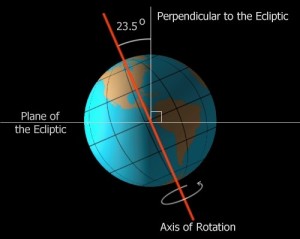 The easiest association to make with 23.5 is its relationship to the obliquity, or axial tilt, of the earth. It is commonly referenced that the most general estimate of the measurement of the tilt of the Earth’s axis is 23.5 degrees. In most scientific definitions Earth’s obliquity oscillates between 22.1 and 24.5 degrees on a 41,000-year cycle, but historically, the number 23.5 seems to have been used as an average, standard measurement. But as interesting as it is that people might have been aware of this fact in the past, it still doesn’t explain why might it be important to mark this date on the calendar.
The easiest association to make with 23.5 is its relationship to the obliquity, or axial tilt, of the earth. It is commonly referenced that the most general estimate of the measurement of the tilt of the Earth’s axis is 23.5 degrees. In most scientific definitions Earth’s obliquity oscillates between 22.1 and 24.5 degrees on a 41,000-year cycle, but historically, the number 23.5 seems to have been used as an average, standard measurement. But as interesting as it is that people might have been aware of this fact in the past, it still doesn’t explain why might it be important to mark this date on the calendar.
Another fact that has always been quite intriguing, is how close the number of days in the entire calendar year are so closely related to the number of degrees in a perfect circle, that being 360. Is it conceivable that some of our earlier forebears thought this also? That maybe they thought there was something divine about this proximity fact, and that there was something divine about our planetary home of Earth?
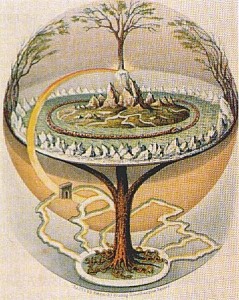 Stories about a straight, ascending world tree, or the perfect axis (or navel) of the Earth seem to support this idea of connecting the Earth with the divine. That with a perfectly perpendicular axis in relation to the ecliptic or orbiting plane of the earth, our seasons would be balance, as would the extremes in yearly temperatures. It could also, possibly, describe a state of earthly perfection, a state of Eden, where the fluctuating cycles of the sessions would bear no affect over the agricultural, pastoral, or daily lives of individuals; with all of these finding balance and being met with temperance. A “golden era”, where the toil and labors of earthly existence are minimized. All of these things symbolically made possible by “correcting” the tilted axis of the Earth so that it is perpendicular to its orbital plane.
Stories about a straight, ascending world tree, or the perfect axis (or navel) of the Earth seem to support this idea of connecting the Earth with the divine. That with a perfectly perpendicular axis in relation to the ecliptic or orbiting plane of the earth, our seasons would be balance, as would the extremes in yearly temperatures. It could also, possibly, describe a state of earthly perfection, a state of Eden, where the fluctuating cycles of the sessions would bear no affect over the agricultural, pastoral, or daily lives of individuals; with all of these finding balance and being met with temperance. A “golden era”, where the toil and labors of earthly existence are minimized. All of these things symbolically made possible by “correcting” the tilted axis of the Earth so that it is perpendicular to its orbital plane.
With regard to Freemasonry, we find that there are several tools to perhaps assist with this matter of the “skewed axis”. In some examples of its literature, there are images of tools used for leveling, squaring, and making plumb lines; in association with building construction, or physical Masonry. All of these tools in their various ways are used to balance, true, and straighten the building so that it is in balance with the laws of Earthly nature and does not fall over or collapse.
But it would pay to look beyond literal interpretations of such themes as many of us know that Freemasonry is, after all, considered to be speculative, as well as practical, in its concerns. It is possible therefore, that the tools here have an additional level of meaning, outside of their literal meaning, having instead to do with the idea of bridging the “below” with the “above”. Could we perhaps consider this symbolism much in the same way that the trued axis mundi shows a perfect path leading from the earth to the divine?
 One such other figure commonly associated with Freemasonry is the Pythagorean Theorem, also known as Euclid’ s 47th problem. In it, there is known another formula for creating a perfectly perpendicular angle by creating three sides of a triangle with proportions of 3 to 4 to 5. The base of the triangle (4) might easily be understood to represent the horizontal plane of the ground, the vertical side reaching perfectly upward to the heavens (3), with the descending side (5) returning back to earth again. So we are lead again to the subject of Geometry (“earth-measure”), to understand the method of perfect completion of the straight angle.
One such other figure commonly associated with Freemasonry is the Pythagorean Theorem, also known as Euclid’ s 47th problem. In it, there is known another formula for creating a perfectly perpendicular angle by creating three sides of a triangle with proportions of 3 to 4 to 5. The base of the triangle (4) might easily be understood to represent the horizontal plane of the ground, the vertical side reaching perfectly upward to the heavens (3), with the descending side (5) returning back to earth again. So we are lead again to the subject of Geometry (“earth-measure”), to understand the method of perfect completion of the straight angle.
So perhaps then, the significance to Jan 17th, of being 23.5 days (or degrees) past the furthest point away from our Sun, is meant to mark a meaningful accomplishment. An accomplishment of “correcting” the askew 23.5 degrees of the Earth, where otherwise we find our foundation susceptible to the continuous flux and revolving patterns of its seasons and the chaos of its changing weather. It would seem then, that it has to do with finding balance, performing square and perfect work, and in building from the ground, or Earth, straight upward.
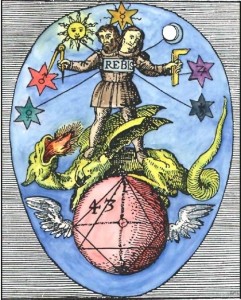 If we are to find the true meaning behind this date, it appeals (at least to my mind) to begin with this idea. For whatever the real reason is behind the continuous suggestion of its importance, we can at last agree that it is not entirely literal in is meaning, but has something deeper and higher in mind to show. And if we are to work up to an understanding of what this is, it seems there is only one place to begin that work.
If we are to find the true meaning behind this date, it appeals (at least to my mind) to begin with this idea. For whatever the real reason is behind the continuous suggestion of its importance, we can at last agree that it is not entirely literal in is meaning, but has something deeper and higher in mind to show. And if we are to work up to an understanding of what this is, it seems there is only one place to begin that work.
Other Posts by Hayward Gladwin:
The Skull on the Tomb, The Rose on the Cross
A Demon, A Stone, and the Aspirant

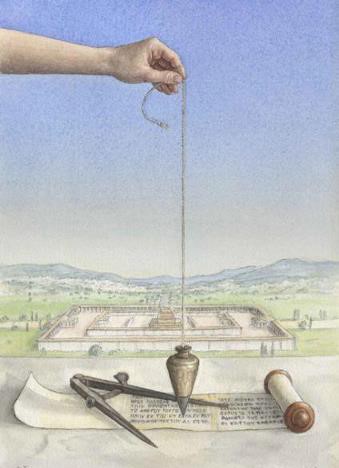
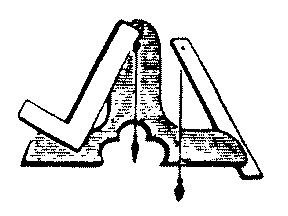
Pingback: The Tower of the Knights Templar » Mysterious Writings
Pingback: The Divine Origin of Nothing » Mysterious Writings
Another great article, Hayward. Thank you for sharing.
I find the 23.5 days from January 17th back to the date of Christmas, and it’s connection to the Tilt, to be very intriguing. In a previous post (https://mysteriouswritings.com/rennes-le-chateau-saunieres-umbrella-and-the-riddle-of-the-sphinx/ ) I mentioned how I feel Proverbs 3:5 might be important to this Mystery of RLC. The verse states, ” “Trust in the Lord with all your heart and lean not on your own understanding; in all your ways acknowledge him, and he will make your paths straight.” I like the ideas to the dates you are suggesting, and feel this verse offers support for it.
In that post, is also talk of the mysterious person ‘leaning’ over what looks to be an umbrella in the RLC fresco (and Sauniere was known to carry one often)……and how the relief has ‘differentiating seasons’ on either side of the Mount……which might offer support to your thoughts in your article above….
much to consider….more later…..and thanks again….
Hi Jenny- Thats a great correspondence. Never thought about the painting of the mound at RLC that way before, but its also interesting to consider the figure of Christ standing straight at the top of the hill with the phrase: “Come unto me, all ye that labour and are heavy laden (burdened), and I will give you rest.” With the mysteriously left bag at the foot of the hill. (is that the heavy load or burden put aside, or a treasure, as others have suggested?).
Thanks goes to you, for the continued opportunity. Can’t wait to hear some other thoughts on the subject as well.
Hi Nate-
Yes, thank you for that additional anecdote. There is also talk of a “prophetic year” of the bible, consisting of 360 days. To this, Sir Isaac Newton also said, “All nations, before the just length of the solar year was known, reckoned months by the course of the moon, and years by the return of winter and summer, spring and autumn; and in making calendars for their festivals, they reckoned thirty days to a lunar month, and twelve lunar months to a years, taking the nearest round numbers, whence came the division of the ecliptic into 360 degrees.”
So there are specific examples of individuals who considered this as a fact as well, in addition to its existence pointed out through scripture itself. Very Illuminating!
I wonder if Newton was deliberately muddying the waters with that comment, because surely he knew his astronomy well enough to realise how unlikely is what he says. From full moon to full moon there are 29.5 days, and surely even rather primitive peoples would notice in only a few full moons the difference between 30 and 29 and a half days, because they’d notice the moon was out of sync with the expected phase. Even if one was willing to accept a 360-day year as plausible, a difference of only 5 days accumulates to 3 months in only 18 years, and by then it would be obvious to anyone that the seasons were out of sync.
I don’t think any culture ever really believed that the year had 360 days, except when they defined “day” for this purpose as “one degree movement of the ecliptic”, regardless of the day-and-night cycle.
Yes, but the point of the connecting the number of days in the calendar year with the number of degrees in a circle is to bring suggestion as to why the idea of the date was being emphasized, not to prove the exact scientific likelihood of this fact, but to bring into factor the possibility that if it was what others thought, then it could be the inspiration behind the idea. You are conflating the truth of its accuracy with the subject of it’s being perceived as being so.
I don’t think it’s any coincidence that the number of degrees in the circle is close to the number of days in the year, because people started thinking about angles in connection with astronomy. In fact, one may wonder why it isn’t exactly the same, until you realise that 365 doesn’t divide neatly into quarters or sixths, which are obvious divisions of the circle. Presumably 360 was chosen because it divides neatly into all the obvious divisions of the circle and quite a few of the less obvious, and it’s close enough to 365.
In connection to this, the ancient Egyptians had a myth that says that years originally had only 360 days. Ra, the sun god, was a strong ruler but he feared anyone taking his throne. When he discovered that Nut, goddess of the sky, was to have children, he was furious. He decreed, “Nut shall not give birth any day of the year.” At that time, the year was only 360 days. Nut spoke to Thoth, god of wisdom, and he came up with a solution. Thoth gambled with Khonsu, god of the moon. Every time Khonsu lost, he had to give Thoth some of his moonlight. Khonsu lost so many times that Thoth had enough moonlight to make 5 extra days. Since these days were not part of the year, Nut could have her children. She had five children: Osiris (later ruler of the gods and then god of the dead), Horus the Elder (god of war), Set (god of evil and the desert), Isis (goddess of magic, mother goddess) and Nephthys (goddess of water).
I find the idea that the date of January 17th may be related to the angle of the ecliptic interesting, though I have a different theory. Your idea mixes horizontal and vertical angles, which isn’t normally done, but that doesn’t mean nobody ever did it.
My theory is about the height of the sun on that date, in the latitude of Rennes le Chateau, Montsegur and the Cathar area.
Summed up and illustrated beautifully towards the end!!! Nice job Hayward!!!
Thank you Mark. I am happy you appreciated it!